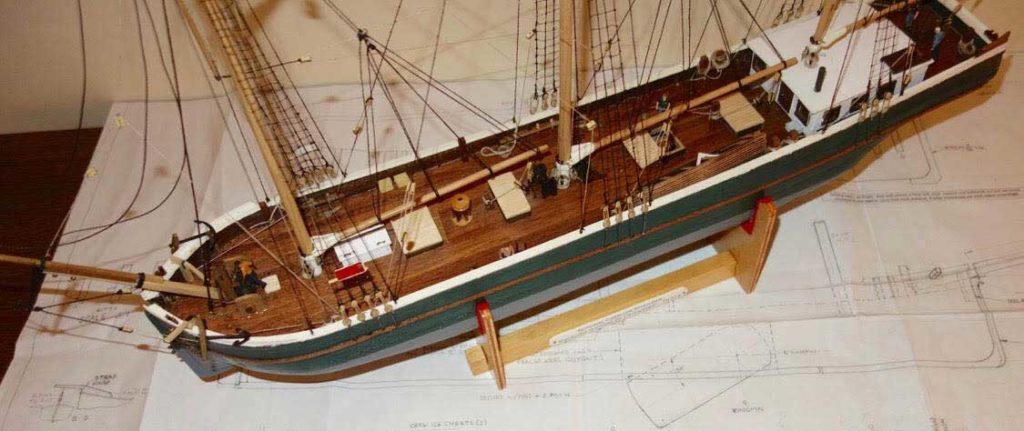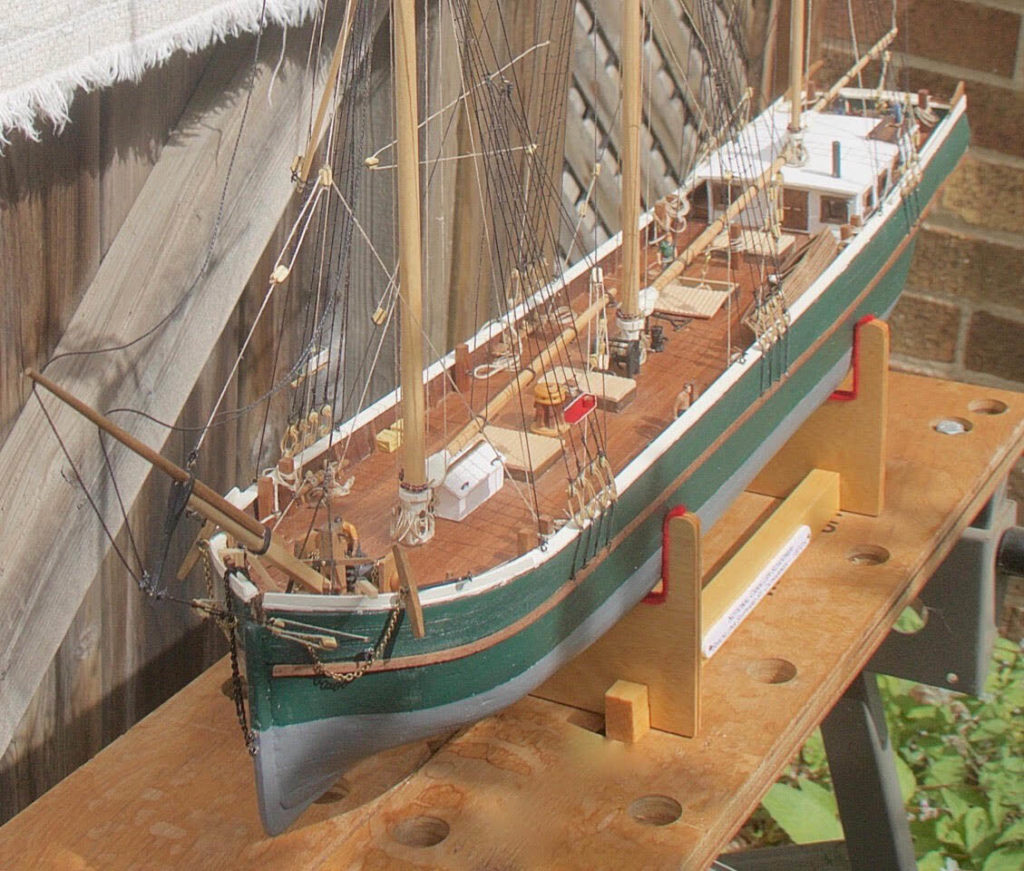Brothers, Tim and Malcom Morrison are “model makers,” a hobby they began over 25 years ago with commercially available boxed plastic models. They’ve come a long way since then, and now they’re researching and designing ships that used to ply the Great Lakes. Tim worked as a draftsman and has spent many hours researching ships in museums and studying underwater photographs for his models.
We love model making – we used to bash plastic kits together when we were kids. I got into making wooden ship models around 25 years ago. Also, Tim is a trained draftsman so his major task would be producing full size plans of our canaller in 1/72 scale, or one inch equals about six feet.
But we really didn’t know what these ships looked like, apart from a number of photos taken in the 1800s. No shipyard drawings were available and we couldn’t even find a model of such a ship.
Tim spent about 200 hours researching this, through Canadian and American maritime museums and photos from several shipwrecks on the bottom of the Great Lakes.
The research yielded enough info for Tim to draw up plans for the hull and equally important, the rigging.
The construction is plank on bulkhead. The bulkheads comprise about a dozen frames. We call it scratch built, although we did buy some materials, including winches, blocks and anchors.
This ship is unique in many ways. It was built more or less like an ice cube tray, with a sharp end and a platform at the other end to hold a cabin structure. It was made to fit into the locks of the second Welland Canal and we made the kit to reflect that. For example, note the bowsprit is angled out of the way so it doesn’t crack up on the lock walls. Also, the catheads retract inwards, as to the boat davits on the stern.
Another design note is the very flat bottom and a retractable centreboard.
The bottom of the Great Lakes are littered with hundreds of these ships, many of which just disappeared without a trace. The quality of wood was indifferent in many cases, ships were routinely overloaded and the crew was tiny – typically half a dozen. Not many to haul down the huge sails when a sudden squall materialized.
This isn’t a particular ship, although we did name it Driftwood. Rather, it is typical of the many schooners produced by Shickluna in the 1870s.
Submitted by Tim Morrison
The Facebook Group “Great Lakes Shipwreck Research Group”, showcases Tim and Malcom’s work







